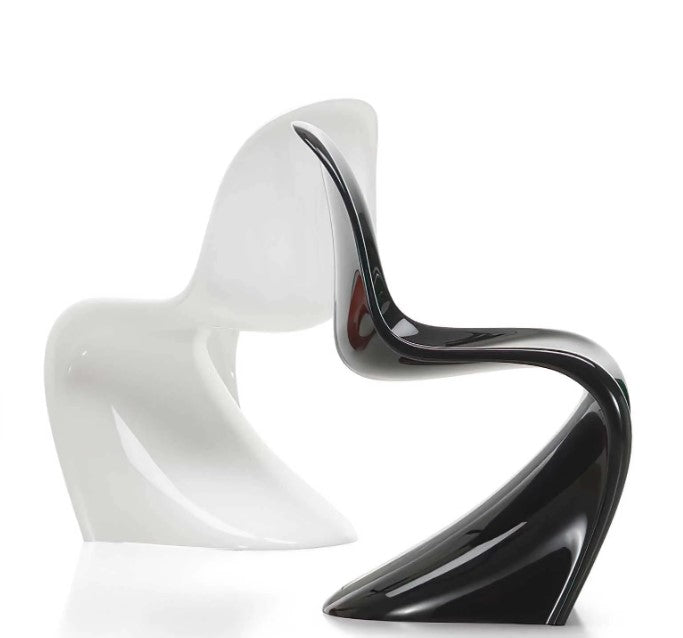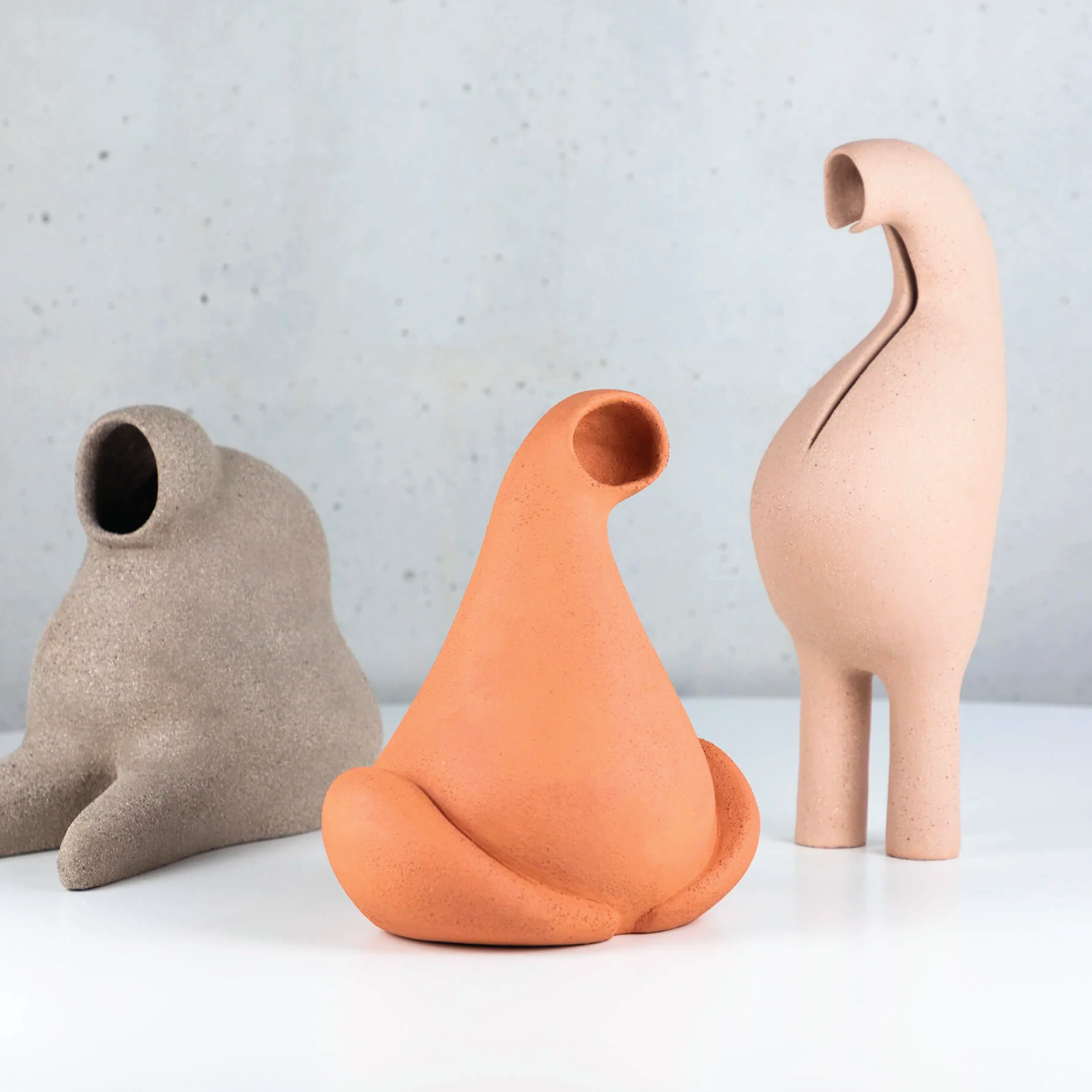Enveloping our bodies with enchanting poise and welcomed comfort, good seating supports the back while offering room to plant our feet or swing our legs, and at times even grants us an inviting space to rest our arms. While the chair is a ubiquitous friend to us today in our homes and at the office, as a society we haven’t really been sitting on them for all that long; it was not until recently that there was a chair provided for every person in the home, as stools, benches, and even floor mats proved most common to rest one’s wearied legs. For millennia, chairs were instead reserved for those in positions of power or authority, ornated with gold as with Egyptian pharaohs of 3100 BC, decorated with representations of beasts and symbols of the gods as in Ancient Greece, or reserved for royalty as austere thrones in Medieval times. Around the time of the Renaissance, the notion of privilege began to shift, and chairs were no longer reserved for only the most powerful, as a symbol for leadership – aristocrats and anyone who could afford them were now welcomed a literal seat at the table, and the design of the chair reflected the style of the times, from the reinvention of the ancient Roman curule form draped with ornate tapestry of the Renaissance to the Chinese and English cabriole-legged furniture of the 18th century.
As the chair grew in popularity, it wasn’t until the 1880’s that they began to make an appearance for the masses, regardless of wealth or status, and since that time developments in material, ergonomics, varied types of sitting and style blossomed, making the 20th century in particular a robust time for the evolution of the chair as a democratic companion for work, relaxation, social communion, and the routines of daily life. At the time of the chair’s burgeoning popularity rose the Arts and Crafts movement, whose admonishment of the heavily ornamented styles of the past gave us chairs with sleek geometries and architectural sensibilities, as with the Hill House chair by Charles Rennie Mackintosh from 1902 or Frank Lloyd Wright’s Barrel chair from 1904, both designed to complement the architecture in which they were situated. Once the De Stijl and Bauhaus movements peaked into the scene in the early 1900s, a renewal of architecture and design was set in motion, one that gave rise to chairs that revealed an artistic approach to furniture design, as with the 1918 ultra constructivist Red and Blue chair by Gerrit Rietveld, showing that the material world could be governed by the same mathematical principles that inform the workings of the universe. Inspired by this icon of modern design, yet engaged in using materials suitable for industrial production as became of marked interest following World War I, design pioneer Marcel Breuer crafted the Wassily chair in 1925. With clean lines and remarkable planes of canvas, Wassily enlightened the design world to the sculptural possibilities of tubular steel, which in turn informed numerous designs of 1920s and 30s, including legendary pieces, like the MR 20 by Mies van der Rohe, the Fauteuil tournant by Charlotte Perriand, and the LC 1 Sling chair from Le Corbusier, a unity of art and technology that informed a chair’s purpose and construction as the world became more interested in the “home as a machine for living” as made popular during this time.
As the 20th century stormed ahead, the rise of radio and later television as home entertainment presented a new need for the chair: a place to lean back and relax, preferably with feet up, cradled in upholstered comfort. With this, we welcomed the introduction of leisurely seating, made possible with innovative technological solutions of the post World War II era, like new compound and plastic materials that had previously been used for military production. Chairs like Eero Saarinen’s Womb chair from 1946 provided an inviting cup-like shell in which one could curl up and relax, with a cushioned ottoman where one could rest one’s feet, and later, the Eames Lounge chair and ottoman, perhaps one of the most famous works by the groundbreaking duo Charles and Ray Eames, became an icon of mid-century design and is still popular today with its swivel base and lush leather upholstery. The 2oth century also welcomed the chair for use in public contexts as well, whether in restaurants, cafeterias, classrooms, and clubs, and with the development of Organic Modernism in the 1940s and 1950s alongside the desire for affordable materials that could be mass produced, we saw sinuous forms and rich though humble natural materials, as noted with Scandinavian chairs like Hans Wegner’s Wishbone from 1949 or Arne Jacobsen’s famous Ant Chair from 1952, both crafted in wood and which could be adapted to a variety of settings. While the 1920s and Bauhaus gave birth to the cantilevered chair, a piece that appears to defy gravity as the seat rests one legs formed from one curved line, the decades that followed witnessed reiterations of this chair in varying materials and for numerous uses, as with the Panton Chair of 1960, the first single form and single material chair to ever be made, still enjoyed today by the design enthusiasts and the public alike.
As the social climate of the 1960s and 70s brought radical changes to politics and our communal fabric. designs for chairs emerged that were informal and irreverent, with unexpected forms that mirrored trends in pop art and post-modernist milieus. The Sacco Chair made history with a structured sack filled with polystyrene pellets, an elegant yet freeing precursor to the bean bag chair, and unconventional modular shapes like those in Joe Colombo’s Tube Chair reflected an interest in user participation and man-made materials. Works from Shiro Kuramata like his convention-breaking Glass Chair introduced new ways of creating joins while giving pieces a visually light, dream-like aesthetic to design in the post-modern era, futuristic and unique. In turn, the 1980s saw a tension between highly stylized, whimsical pieces like Toshiyuki Kita coquettish Wink chair or Philippe Starck’s Richard III and the sophisticated simplicity of minimalist design from the likes of Alberto Meda and Jasper Morrison, whose Light Light and Air chairs respectively, valued discrete forms and technological methods that made the work more streamlined, fun to use, and able to blend harmoniously in any environment. With the innovations in production and advancements in materials like polycarbonate, chairs could embrace novel and surprising forms yet still seamlessly address comfort and functionality, and hence the 1990s and early 2000s saw lush experimentations in material and contours, with works like Vermelha chair from the Campana Brothers, Chair One from Konstantin Grcic, and the Pane chair from Tokujin Yoshioka. Now chairs blossomed in our homes not only as functional possessions that allow us to dine, converse, study, or relax more comfortably with convivial charm, chairs themselves became members of our family and extensions of ourselves, a way to personally express our own styles and dreams, animated, versatile, and enduring.
Today it is hard to imagine a world without chairs. They offer respite and grant us comfort and stability as we go about performing our daily tasks and add personality and cordiality to our homes. According to Witold Rybczynski, who wrote the book Now I Sit Me Down, “The way we choose to sit, and what we choose to sit on, says a lot about us: our values, our tastes, and the things we hold dear.” Now with a range of options for seating in homes, we can speak our character and uplift our space with a myriad of aesthetics, support, and use. We can express our personal style with chairs from icons of modern design, like Hans Wegner’s Shell or La Chaise from the Eames, or bond personally with the contemporary masters of today, embracing the clean minimalism of Naoto Fukasawa, the multicolored warmth of Patricia Urquiola, or the insightful whimsy of Nendo. With technological advancements in shifts in our social landscape, the chair has certainly evolved a great deal over time but will remain with us now and into the future as reliable companions on our journeys through the everyday, animated, trustworthy, and ever-present.
January 2024























